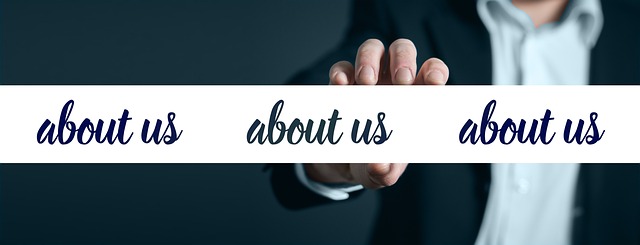Understanding the Nature of Distractions
Distractions are ubiquitous in our modern world. They can come from various sources, including technology, environment, and even our thoughts. Understanding the nature of distractions is a vital first step toward learning how to overcome distractions and remain productive. Think about the last time you sat down to work. Did you encounter notifications from your phone? Perhaps background noise from your environment pulled your attention away. In today’s fast-paced digital age, our attention spans often wane due to information overload. The relentless barrage of social media, emails, and instant messages can transform productive hours into chaotic ones filled with interruptions. This constant switching of focus not only hampers our ability to concentrate but also leads to stress and fatigue.
To effectively tackle distractions, it’s essential to recognize their triggers. Some distractions are external, arising from our environment, while others are internal, stemming from our racing thoughts and emotions. By dissecting your work habits, you can identify specific patterns or activities that tend to divert your attention. Maybe you find yourself checking your email every 10 minutes or scrolling through social media during breaks. Each of these habits contributes to a cycle of distraction. By analyzing these patterns, you can create a plan tailored to your needs, allowing you to take more control over your focus and ultimately enhance your productivity.
Creating an Environment Conducive to Focus
Your environment plays a critical role in either promoting or hindering your ability to concentrate. Creating a workspace designed for productivity can significantly reduce distractions. Start by assessing your current workspace. Is it cluttered? Is there ample natural light? Does it lack comfort? Take time to organize your space. A well-ordered environment fosters mental clarity, helping you to overcome distractions more effectively.
Consider the acoustics of your workspace as well. Noise can be a significant distraction. For example, an open-plan office, although social, might disrupt your focus. Using noise-canceling headphones or playing soft instrumental music can help drown out background noise. If you work from home, establish boundaries with family members or roommates to minimize interruptions. Use physical cues, like a “do not disturb” sign, to signal to others when you are in deep focus mode.
Lighting is another crucial factor. A well-lit area can enhance your mood and productivity. Increase natural light where possible. If you have to work in dim lighting situations, consider investing in a lamp that mimics natural light. Comfort is vital too. Ergonomic furniture may seem like a luxury, but it dramatically affects how long you can maintain focus. A comfortable chair and desk can help you reduce bodily discomfort, hence allowing you to stay productive for longer periods.
Implementing Time Management Techniques
Time management is a critical skill when it comes to staying productive and overcoming distractions. One effective method is the Pomodoro Technique. This technique involves working for 25-minute stretches followed by a 5-minute break. After completing four cycles, you take a longer break of about 15 to 30 minutes. The structure of this system allows you to maintain high focus during work sessions while also giving your mind essential rest intervals. Breaking work down into shorter sessions might seem counterintuitive due to interruptions, but this technique actually trains your brain to improve its attention span over time.
You could also use digital tools for scheduling your tasks. Programs like Trello or Asana can help you visually organize your workload, making it easier to see what needs to get done. Setting specific, measurable goals for each work session can enhance your focus and provide motivation. Instead of telling yourself you will “work on the project,” say, “I will write 500 words on the project today.” This specificity can help you channel your energy and attention better.
Moreover, consider setting deadlines, even for tasks without specific time constraints. Having a timeframe can create a sense of urgency that pushes you to concentrate. Constantly remind yourself of the ‘why’ behind your tasks. If you understand the importance of completing a project and what impact it has on your overall goals, it will be easier to stay motivated and reduce distractions. Remember, time management is about making your time work for you, leading to better focus and, ultimately, greater productivity.
Leveraging Technology to Minimize Distractions
In the quest to overcome distractions and stay productive, technology can play a dual role. It can be a source of distraction or a valuable tool for enhancing focus. The key lies in understanding how to leverage technology wisely. Start by assessing the devices and applications that you use daily. Are they enhancing your productivity or merely adding to the noise? Social media applications, notifications, and email alerts can drown out your focus. Techniques like turning off non-essential notifications or setting up specific times for checking emails can minimize their disruptive power.
On the flip side, you can also utilize technology to create a more conducive working atmosphere. Consider productivity apps like Forest, which gamifies staying off your phone by allowing you to grow a virtual tree when you resist the urge to check your device. Tools like Focus@Will offer music designed to improve concentration. Another useful tool is the “Do Not Disturb” mode most smartphones and computers have. This feature can allow you to work without incoming notifications vying for your attention.
Furthermore, screen time tracking applications can provide insights into your usage patterns, helping you adjust habits. They can highlight how much time you spend on distracting activities versus productive tasks, thus allowing you to make better choices. Technology is not inherently good or bad; it’s all about using it intentionally. By choosing to engage with tools that support focus and productivity, you can effectively fight against distractions.
Practicing Mindfulness and Self-Awareness
Another enriching strategy in the battle against distractions lies in mindfulness and self-awareness. Mindfulness practices, such as meditation or controlled breathing, can enhance your awareness of your thoughts. As distractions arise, mindfulness encourages you to acknowledge them without judgment. For instance, when you find your mind wandering, instead of getting frustrated, you can simply recognize that you are distracted. This acknowledgment permits you to gently redirect your focus back to your task, building a more robust concentration muscle over time.
Self-awareness also involves understanding your personal limits and recognizing when you’re most productive. Everyone has peak hours in their daily rhythm. For some, it’s morning light, while others prefer the calm of the evening. Identify when you feel most energized and focused, and schedule your most critical tasks during these windows. Consistently honoring your natural rhythms will help you stay productive with less effort. Incorporating breaks is also an essential aspect of this practice—it prevents burnout and keeps your energy levels steady.
Additionally, you might want to reflect on your emotions throughout the workday. Stress can lead to mental clutter, making it easier to succumb to distractions. Techniques like journaling or simply taking a moment to breathe deeply can help clear your mind. The more attuned you become to your mental state, the better you can manage distractions proactively. Mindfulness thus acts as a supportive tool, ensuring you remain connected to your workspace while minimizing the chatter that disrupts your attention.
Setting Clear Goals and Priorities
Clear goals act as a map on your journey toward productivity. When you establish specific, measurable, achievable, relevant, and time-bound (SMART) goals, you create a clear path to follow. Without such goals, distractions can easily sidetrack you from what really matters. Start each week by outlining your goals and breaking them into bite-sized tasks. This step allows you to visualize what you need to accomplish, which can be immensely satisfying as you check items off your list.
When tasks clutter your mind, it becomes harder to identify what truly needs your attention. Prioritizing your tasks by urgency and importance can help sort through the noise. The Eisenhower Matrix is a popular method for prioritization, distinguishing tasks based on their urgency and importance. By categorizing tasks into four quadrants, you can quickly determine where to focus your energy and which distractions might need to be sidelined.
Having well-defined objectives not only helps stay productive but also instills a sense of purpose in your daily activities. When you connect with meaningful work, you increase your motivation to stay focused. Regularly revisiting and tweaking your goals can adapt to changing circumstances and keep your efforts aligned with your larger personal or professional aspirations.
Fostering a Healthy Work-Life Balance
Finally, maintaining a healthy work-life balance is essential for sustaining productivity over the long term. Constant work without downtime can lead to burnout, increasing the likelihood of distractions. Make a conscious effort to separate your work hours from personal time. This distinction allows your brain to recharge and return to tasks with renewed vigor.
Consider developing a routine that marks the end of your workday. This could involve shutting down your computer, going for a walk, or engaging in a hobby you enjoy. Taking breaks throughout the workday is vital too. Stepping away, even for a few minutes, can help clear your mind. Simple activities, like stretching or making a cup of tea, can provide a refreshing mental reset. The key is to engage in activities that genuinely help you relax and disconnect from work.
Cultivating social connections outside of work is equally vital. Nurturing relationships and spending quality time with family and friends can offer a necessary distraction from work pressures, replenishing your energy and motivation. Establishing boundaries with work helps enhance your performance when you retake your tasks, ultimately allowing you to overcome distractions more effectively.
Frequently Asked Questions
How can I identify my main distractions while working?
Start by keeping a distraction diary. For a week, jot down what disrupts your focus and at what times these distractions occur. Reflection will help you spot patterns and triggers.
Are there apps that can help me stay productive?
Yes! Numerous productivity apps like Trello, Focus@Will, and Forest can help you manage tasks and minimize distractions. Research various options to find what works best for you.
What strategies can I implement during remote work to limit distractions?
Create a designated workspace, set clear work hours, and use ‘do not disturb’ signals with family or housemates. Periodically review your habits to maintain focus.
How can I make mindfulness a part of my daily routine?
Start small by dedicating just a few minutes each day to mindful breathing or meditation. Gradually increase the duration as it becomes a more natural part of your routine.
What should I do if I feel overwhelmed by my tasks?
Break tasks down into smaller, manageable chunks. Use the Eisenhower Matrix to prioritize tasks and focus on completing one item at a time instead of trying to do everything at once.



